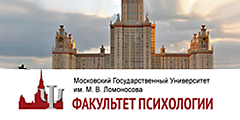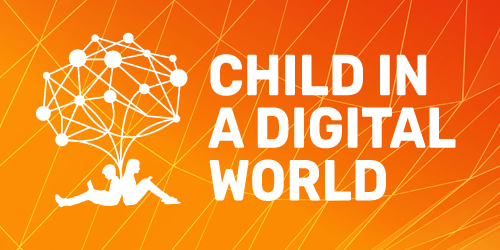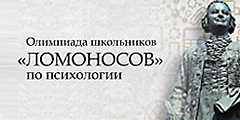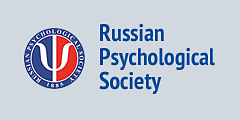Does Quantity Matter? How Extracurricular Activities Affect Working Memory Development Among 5–7-Year-Old Children
Abstract
Background. It is widely recognized that sports, dance, and other structured extracurricular activities can positively influence children's executive function. However, previous research has not thoroughly examined whether participation in a diverse range of activities aimed at acquiring new skills affects working memory development in children.
Objective. To investigate the impact of the quantity of extracurricular activities on the development of working memory among 5–7-year-old children.
Design. Longitudinal data on working memory development were collected from children aged 5 to 7 years (N = 101). Three assessments of verbal and visual working memory were conducted at ages 5, 6, and 7 years. Information on children's participating in extracurricular activities was obtained through parental surveys.
Results. The findings indicate that the number of extracurricular activities in which children participated has a significant positive effect on verbal working memory, with children engaged in multiple types of activities demonstrating a superior ability to retain and reproduce verbal information. Conversely, visual-spatial working memory did not show statistically significant differences based on the number of extracurricular activities.
Conclusion. These results suggest that increasing access to extracurricular activities may foster verbal working memory, which is an important predictor of subsequent academic success and socialization.
Received: 19.04.2025
Accepted: 12.09.2025
PDF: Download
Pages: 124–139
DOI: 10.11621/pir.2025.0308
Keywords: executive function; working memory; extracurricular activities; 5–7-year-old children; verbal working memory; visual-spatial working memory
Introduction
Studies in the field of developmental psychology point to the great importance of executive functions in 5–7-year-old children. Executive functions are a group of cognitive abilities that deal with purposeful behavior and problem solving (Veraksa, 2014). There are several theoretical models of executive functions (Cicerone et al., 2006; Miyake et al., 2000; Norman & Shallice, 1986). However, the most accurate model for 5–7-year-old children is the one with three main components: working memory, cognitive flexibility, and inhibitory control (Miyake et al., 2000). These components enable children to successfully focus their attention, remember information of different modalities, develop purposeful activity, planning and other such tasks that are key to a child's further learning and socialization (Blair, 2002; Welsch et al., 2010; Willoughby et al., 2012).
The first component is working memory, which can be categorized by the type of information perceived: visual working memory and verbal working memory. Visual working memory is involved in retaining and manipulating visual information, while verbal working memory is responsible for processing and storing auditory information and reproducing it. The second component is cognitive flexibility or switching ability. This aspect refers to the ability to quickly and effectively shift attention between different tasks or rules, which is essential for successful adaptation to changing environmental conditions. The third component is inhibitory control. It involves the ability to inhibit habitual or automatic responses in favor of the response required by the task. This is especially important in situations where an alternative response may be incorrect.
Children with well-developed executive functions adapt better to school and perform better academically (Blair & Razza, 2007; Willoughby et al., 2012); manage emotions and behavior more successfully (Denham et al., 2010; Robson et al., 2020); and have higher socio-economic status decades later (Moffitt et al., 2011). Thus, the development of executive functions in the 5–7-year-old children has long-term positive consequences for both the individual and society as a whole. Also there is evidence that targeted training of executive function skills is effective during the preschool years (Schmeichel et al., 2008). However, in order to achieve better results, it is necessary to clarify the scientific understanding of the factors and conditions of their successful formation.
Working memory is one of the key components of executive functions (Miyake et al., 2000). It provides the ability to retain enough information in the child's mind, which is a necessary condition for the work of other executive functions (Miyake et al., 2000). In studies on a child sample, the development of verbal and visual-spatial working memory is most often assessed (Almazova & Mostinets, 2023; Gavrilova & Chichinina, 2023; Veraksa et al., 2016; Veraksa, 2015). Verbal working memory is the ability to perceive and store verbal information (sounds, words, phrases) in memory. Visual-spatial working memory allows the child to retain new visual information (Baddeley, 1986). Together, these two types of memory are the basis for learning the necessary knowledge and skills.
If a child can retain a sufficient number of items and their relationships to each other in memory, it is easier for the child to solve tasks and learn new material (Halford et al., 1998a). As working memory increases, the speed of information processing, the amount of knowledge, and the strategies available to the child to organize it increase. Thus, weak working memory hinders a child's ability to be attentive, to focus, and to remember instructions. And vice versa, the more information a child holds in memory, the better he or she navigates a variety of situations and learns (Barkley, 2001; Cowan, 2014; Holmes et al., 2009; Morosanova, 2021; Solovieva, Quintanar, 2015; Verbitskaya et al., 2015).
The above is supported by studies which show that children with working memory deficits often have difficulties with concentration and problem solving (Alloway et al., 2009; Archibald et al., 2011; Aronen et al., 2005; Gathercole et al., 2008; Lui & Tannock, 2007; Pimperton & Nation, 2014). These difficulties impact not only the learning process, but also the child's daily life. For example, children with poor working memory have difficulty organizing and planning their time and overcoming impulsivity (Gathercole et al., 2008).
One of the components of working memory important to the present study is the phonological loop, which plays a significant role in the process of remembering and repeating information (Baddeley & Hitch, 1974; Baddeley, et al., 1998). The phonological loop is responsible for temporarily storing sound information and repeating it to maintain the integrity of the text read or heard. The phonological loop has two components and is phonological store, which is related to speech perception, and an auditory control method, which is related to speech production (Henry, et al., 2012).
Working memory, like other cognitive processes, can be influenced not only by innate abilities, but also by the environment in which a child grows and develops, as well as by his or her activities (Ericsson & Kintsch, 1995). From the perspective of the formation of cognitive abilities, this point can be assessed as promising, since there are reasons to believe that working memory can be developed purposefully by creating conditions that will stimulate its development. However, it should be understood that unfavorable conditions, such as a poor educational environment, can slow the development of working memory (Engel de Abreu et al., 2013; Gavrilova & Chichinina, 2023; Nekipelova & Nekipelov, 2023).
There are several main factors that can affect the development of working memory in children. According to Piaget's theory of cognitive development, working memory increases as logical thinking develops (Piaget, 2003). It is easier for children to remember new information if they link the new material with what they already know and are able to systematize the knowledge they gain. In general, increasing the amount of knowledge helps to build a more holistic view of a subject and allows the child to better understand the material. According to the principles of the cultural-historical approach, as the child masters cultural knowledge, memory is transformed from a natural mental function into a higher mental function (Vygotsky, 1984). This means that it will be easier for a child to remember new material if he or she has the cultural knowledge necessary to analyze and comprehend new information. This knowledge can include language, writing, and symbols, which work effectively in teaching 5–7-year-old children. Also, according to Activity Theory, a child is able to learn well in meaningful and well-organized activities (Leontev, 2004). Not only is the structured information presented to the child important, but also his or her personal motivation and involvement in a particular activity. Studies have repeatedly considered the thesis that children demonstrate well-developed executive functions in general and working memory in particular when the quality of lessons and the professionalism of teachers is high and when there is a positive relationship between the teacher and the child. All of these affect the child's engagement in the learning process and therefore the development of working memory (Bukhalenkova et al, 2022; Egert et al 2018; Howes et al, 2008).
Almost all these factors of successful formation of working memory are present not only in kindergarten or school, but also when a child participates in extracurricular activities. Such activities include musical, sports, creative, language, and theatre activities, which are discussed in more detail in the next subsection.
In addition to the main educational program of a kindergarten or school, extracurricular activities can be useful. For example, dance, sports, language, and other extracurricular activities provide an opportunity for the child to acquire not only new structured knowledge, but also to master certain cultural tools, gain experience of inclusion in different activities and building relationships within different groups (Baddeley et al.,1998; Bayanova et al., 2023; Chichinina et al., 2022; Frischen et al, 2019; Frolli et al., 2022; Gathercole & Baddeley, 1990; Shen et al., 2020; Tvardovskaya et al., 2020).
Musical activities require the child to analyze musical pieces and understand the mood of the music, which requires retention of sufficiently large compositional fragments in memory (Bayanova et al., 2023; Frischen et al., 2019; Sepúlveda-Durán et al., 2024; Veraksa et al., 2023). Dance activities engage working memory because the child needs to learn the sequence of movements and relate them to rhythm and melody (Chichinina et al., 2022; Shen et al., 2020). Learning foreign languages promotes the development of working memory not only through learning new words, but also through the formation of new concepts that arise from generalizing concepts already known to the child (Baddeley et al., 1998; Gathercole & Baddeley, 1990). More to the point, sports activities are also beneficial for child development, as the child needs to memorize the correct execution of compound cardiorespiratory movements, act according to the instructions received, and memorize the coach's instructions (Frolli et al., 2022; Tvardovskaya et al., 2020; Veraksa et al., 2021; Veraksa et al., 2020; Zarazaga-Peláez et al., 2024). Thus, extracurricular activities, whether chess, music, sports or dance, imply mastering not only new knowledge but also specific complex skills.
In addition to the content that children learn in extracurricular activities, it can also be beneficial for working memory if these activities are often organized in a group format. Group work involves interaction between children, with discussion and sharing of ideas, which helps to stimulate mental activity. Group learning encourages repetition and consolidation of information learned, which is also beneficial to the development of working memory (Diamond & Ling, 2020).
It is also important that participation in extracurricular activities structures the child's daily life. Systematic attendance and preparation for activities stimulates the child's working memory training. When a child follows a daily routine, the need to retain the tasks in memory helps the child to successfully carry out his or her activities. Additional activities become even more valuable if they ensure that the child is emotionally involved and enjoys the learning process (Vinogradova, 2004). This strengthens motivation and the desire to learn. Positive emotions associated with learning can significantly increase the efficiency of memorizing new material.
Thus, well-structured and organized extracurricular activities allow children not only to successfully learn new material but also to spend time in a pleasant and useful way, particularly in terms of working memory training. This, in turn, lays a solid foundation for their further learning and development.
This longitudinal study examines changes in working memory associated with children's participating in extracurricular activities (beyond the compulsory kindergarten or school program), while controlling for confounding factors such as gender, age, and some other socio-demographic variables. A longitudinal perspective analyzed the development of working memory in children aged 5 to 7 years with three measurement points conducted in 2022 (Time 1), 2023 (Time 2), and 2024 (Time 3). Data were collected on measures of verbal and visual working memory; on the number of extracurricular activities in which the children participated; and the number of children in the family, the mother's education level, and the family income at the time of the study. The main hypothesis of the study was that the more extracurricular activities a child participates in in addition to the main kindergarten or school program, the better the development of his/her verbal and visual-spatial working memory, both at the age of 5 and at the age of 7.
Methods
Participants
The participants were 5–7-year-old children from Moscow from 2022 to 2024. The initial number of children included in the study was 135. However, after applying the inclusion criteria (full-term birth, birth weight over 2,500 g, absence of visual or hearing impairment, and availability of data from the parental questionnaire and all three assessment waves). To be included in the final sample, a child had to have complete data from all three assessments (at ages 5, 6, and 7); children with missing data for any of the time points were excluded). As a result of applying these criteria, 34 children were excluded from the analysis. The final sample included 101 children. At the time of the first assessment, the average age of the children was 5 years (M = 63.6 months, SD = 3.29). A second assessment involving the same children was conducted one calendar year later, at the age of 6 (M = 75.4 months, SD = 3.72). The third assessment was conducted at the age of 7 (M = 90.3 months, SD = 6.12).
Information about participating in extracurricular activities beyond the compulsory kindergarten program was obtained from a survey of parents. Only 14% of the children participating in the study did not participate in any extracurricular activities (of which 42.9% were boys and 57.1% were girls). The remaining 87 children (86% of the total sample) participated in extracurricular activities: 33 children participated in 1 extracurricular activity (33% of the total sample), 21 children participated in 2 extracurricular activities (21% of the total sample), 21 children participated in 3 extracurricular activities (21% of the total sample), and 12 children participated in 4 or more extracurricular activities (12% of the total sample). Of these, 63.4 % of children participated in sports activities; school preparation activities, 46.5%; fine arts and arts and crafts, 3.7%; dance, 33.7%; and chess, 11.9%. The sample included only those children who participated in extracurricular activities consistently throughout all three years of the study.
As a result of the survey of parents about socio-demographic characteristics of families, the following data were obtained. The majority of respondents classified their family as having an average income (74.3%); 91.1% of mothers had higher professional education. At the time of the survey, 27.7% of the participants were the only children in the family; 5.5% grew up with one brother or sister, and the remaining 21.8% were raised with two or more siblings.
Measures
The Sentences Repetition subtest of the NEPSY-II was used to assess verbal memory (Korkman et al., 2007). This instrument is a list of 17 sentences that gradually become more difficult to remember (as the sentences increase in length and become more grammatically complex). The maximum score on the instrument is 34.
The Memory for Designs subtest of the NEPSY-II was used to assess visual-spatial working memory (Korkman et al., 2007). The test includes four tasks of varying complexity, in which the child must remember the picture shown for 10 seconds and then select and place multicolored cards with images on a special frame (4x4 cells) in the same configuration in which they were arranged on the picture initially presented. The selection set of cards includes distractors. The maximum score is 12.
A parent questionnaire was designed and administered to collect data on the number of extracurricular activities in which the children participated beyond the compulsory kindergarten program, inclusion criteria for the sample (full-term birth, birth weight, absence of visual or hearing impairment), and socio-demographic characteristics of families (family income, mother's education, and presence of siblings).
Procedure
Assessment was conducted in kindergartens and schools, in a calm environment that excluded distraction of the participants' attention. Assessment was carried out individually. All testers were trained before the survey and followed the standard principles of psychological assessment of 5–7-year-old children. Assessment was carried out three times at intervals of one year. At the time of the first assessment, the average age of the children was 5 years. The second assessment involving the same children was conducted one calendar year later, at the age of 6. Then the third assessment was conducted at the age of 7.
Results
Descriptive statistics for the results of assessment of verbal working memory and visual working memory of the children are presented in Table 1. The results are presented separately for each age at which the examination was conducted (5, 6 and 7 years) and are divided by the number of extracurricular activities in which the children participated.
Table 1
Descriptive Statistics for the Main Variables Examined in the Study
|
Variable |
5-6 y.o. |
6–7 y.o. |
7–8 y.o. |
|||||||||
|
|
M |
SD |
Min |
Max |
M |
SD |
Min |
Max |
M |
SD |
Min |
Max |
|
Verbal working memory (without extracurricular activities) |
16.3 |
4.29 |
8 |
25 |
18.2 |
3.03 |
15 |
25 |
21.6 |
3.61 |
14 |
29 |
|
Verbal working memory (with 1 extracurricular activity) |
16.5 |
4.41 |
0 |
26 |
18.9 |
3.28 |
12 |
27 |
21.2 |
2.96 |
15 |
28 |
|
Verbal working memory (with 2 extracurricular activities) |
17.5 |
4.12 |
9 |
24 |
20 |
4.27 |
13 |
26 |
21.8 |
3.8 |
14 |
28 |
|
Verbal working memory (with 3 extracurricular activities) |
18.4 |
3.05 |
15 |
26 |
20.8 |
4.22 |
14 |
29 |
23.4 |
3.8 |
16 |
31 |
|
Verbal working memory (with 4 or more extracurricular activities) |
19.2 |
3.71 |
14 |
26 |
21.5 |
3.42 |
16 |
27 |
24.3 |
4.56 |
16 |
31 |
|
Visual working memory (without extracurricular activities) |
73.2 |
17.37 |
48 |
101 |
88 |
15.65 |
61 |
113 |
113.1 |
26.74 |
36 |
144 |
|
Visual working memory (with 1 extracurricular activity) |
68.3 |
2.29 |
38 |
115 |
87.8 |
23.21 |
44 |
120 |
114.2 |
26.06 |
41 |
151 |
|
Visual working memory (with 2 extracurricular activities) |
67.1 |
18.1 |
40 |
107 |
90.3 |
19.62 |
60 |
120 |
105.7 |
34.68 |
39 |
148 |
|
Visual working memory (with 3 extracurricular activities) |
70.7 |
19.21 |
34 |
106 |
80.9 |
14.13 |
51 |
114 |
106.3 |
33.38 |
35 |
148 |
|
Visual working memory (with 4 or more extracurricular activities) |
73.3 |
19.72 |
32 |
99 |
92 |
16.74 |
69 |
117 |
107.9 |
28.97 |
34 |
136 |
|
Age |
63.6 |
3.29 |
54 |
73 |
74.4 |
3.72 |
68 |
84 |
90.3 |
6.12 |
78 |
102 |
Table 2
Results of the Analysis of Within-Subject Effects (Changes over Three Years of Measurement) for Dependent Variables
|
Variable |
Age 5-7 |
||
|
|
F |
p |
η² |
|
Verbal working memory |
97.113 |
<.001 |
.199 |
|
Visual working memory |
89.243 |
<.001 |
.347 |
The main hypothesis of the study, that the capacity of verbal and visual-spatial working memory of children aged 5 and 7 depends on the number of extracurricular activities in which they participated, was tested by means of a comparative analysis of variance with repeated measures (Repeated Measures ANOVA). The dependent variables were the results of the verbal and visual-spatial working memory assessment from the first, second, and third assessments, and the independent variable was the number of extracurricular activities in which the child participated. The analysis revealed that the number of extracurricular activities had a significant positive effect on the ability to hold information in verbal working memory (F(4) = 2.73, p = .035, η² = .082) (see Figure 1). However, visual-spatial working memory was not statistically significantly different according to the number of extracurricular activities in which children participated (F(4) = .290, p = .884, η² = .006).
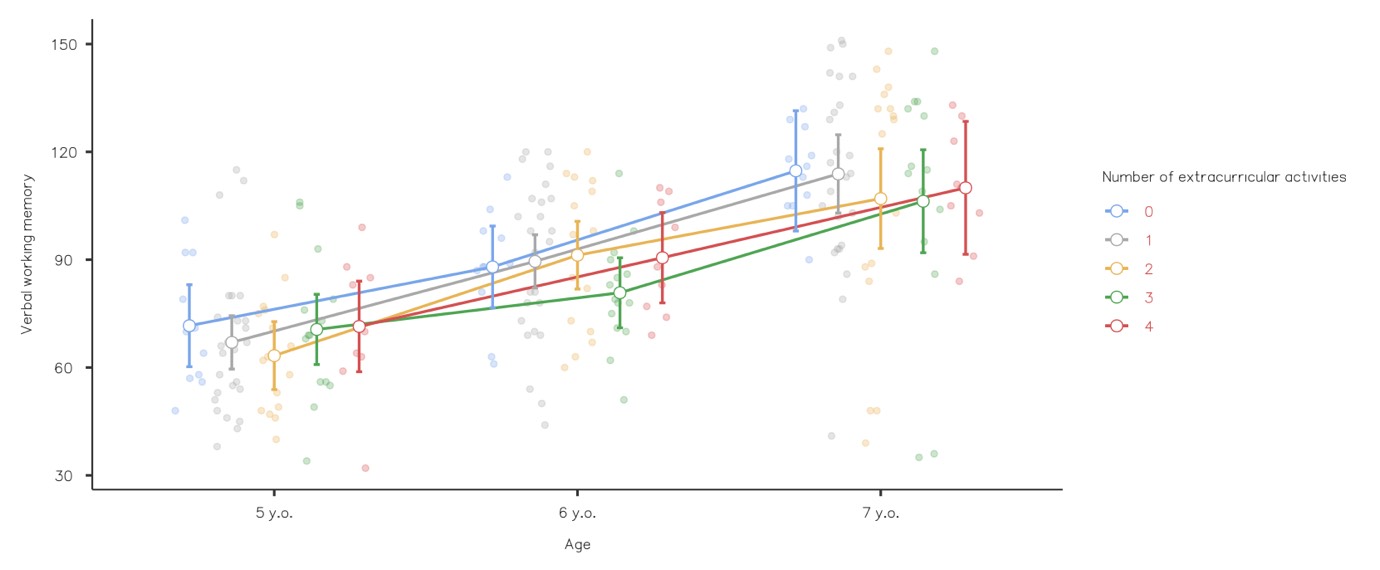
Figure 1. Development of verbal working memory from 5 to 7 years, depending on the number of activities in which children participated in addition to the compulsory kindergarten or school educational program.
In order to controlling for potential confounding variables, the role of socio-demographic factors in the development of working memory and the number of classes in which children participated were also analyzed. The presence of siblings, according to the results obtained by comparative analysis of variance with repeated measures (Repeated Measures ANOVA), statistically significantly conditioned verbal (F(2) = 4.72, p = .012, η² = .045), but not visual-spatial (F(2) = 1.53, p = .222, η² = .014) working memory development. Family income and mother's education level did not directly influence working memory development (p >.05). The role of socio-demographic factors in the number of extracurricular activities in which the children participated was analyzed using Pearson's X2. A statistically significant relationship was found between the number of extracurricular activities children participated in and the mother's educational level (X2 = 3.7; p = .015), family income (X2 = 17.5; p = .025), and the presence of siblings (X2 = 15.4; p = .052).
Discussion
In this study, aimed at examining an important factor in the development of children's cognitive abilities in 5–7-year-old children, we asked about the benefits of children participating in extracurricular activities for working memory development. The benefits of extracurricular activities for working memory development have been pointed out by many authors, including evidence that learning complex activities, such as playing a musical instrument or other specific skills, affects brain anatomy (Baker et al., 2003; Cross et al., 2006; Hutchinson et al., 2003; Nielsen & Cohen, 2008; Schlaug, 2001). For example, regular music practice has been shown to increase grey matter volume in motor areas of the brain (Hyde et al., 2009). Such structural differences appear about a year after the beginning of training (Hyde et al., 2009; Schlaug et al., 2005). Retrospective studies have also supported the benefit of extracurricular activities during the childhood years for the development of cognitive executive function skills (Forgeard et al., 2008; Ruthsatz et al., 2008; Schellenberg, 2006). However, such studies have not analyzed the effect of the number of extracurricular activities in which a child participated.
The purpose of this study was to analyze changes in children's working memory over a three-year period in the context of the number of extracurricular activities in which they participated. It was hypothesized that the more extracurricular activities in which a child participated, the more developed their verbal and visual-spatial working memory was at both age 5 and age 7. In addition, the possible influence of such factors as the presence of siblings, mother's educational level, and family income on the number of extracurricular activities and working memory was considered.
The study confirmed the hypothesis that verbal working memory scores improved significantly with the increase in the number of extracurricular activities in which a child participated. Children who participated in more than one type of extracurricular activity performed better on the task of memorizing and reproducing verbal information. This pattern is consistent with previous findings on the benefits of extracurricular activities for working memory during the childhood years (Bayanova et al., 2023; Chichinina et al., 2022; Frischen et al., 2019; Frolli et al., 2022; Shen et al., 2020; Tvardovskaya et al., 2020). However, the development of children's visual-spatial working memory over the entire study period was not influenced by the number of extracurricular activities in which the children participated. This result may indicate different mechanisms underlying the retention of verbal and visual information.
Indeed, according to previously published data, verbal information is stored in memory due to the coordinated work of three brain structures that form the so-called phonological loop (Bergman et al., 2014). The phonological loop ensures that verbal information is processed and retained for short periods of time (Baddeley et al., 1998). It is likely that the development of visual-spatial working memory occurs through more complex psychophysiological mechanisms and takes longer for meaningful changes to emerge.
The results of the current study confirm that working memory may be conditioned by the social environment. Consequently, unfavorable conditions or a poor educational environment may slow the development of working memory, which has also been demonstrated in earlier studies (Nekipelova & Nekipelov, 2023; Gavrilova & Chichinina, 2023; Engel de Abreu et al, 2013).
We also examined how socio-demographic variables and family environment affect the development of working memory in children. Thus, as part of the additional hypothesis testing, the role of such socio-demographic factors as mother's educational level, family income, and the presence of siblings was examined. It was shown that the mothers of those children who participated in a greater number of extracurricular activities had a higher level of education. Despite the fact that it is objectively more difficult for parents in large families to organize children's participating in extracurricular activities (including due to inconsistency of school shifts and time of activities), no differences in their number were revealed. At the same time, according to the results obtained, the presence of siblings has a statistically significant positive effect on the development of verbal working memory. This result is also consistent with earlier studies showing that working memory, like other cognitive processes, is determined not only by innate data, but also by the environment in which a child grows and develops (Ericsson & Kintsch, 1995).
However, a child's life does not have to be all extracurricular activity. Play, including with siblings, is an effective means of developing memory and other intellectual abilities (Greenough & Black, 1992; Han et al., 2022). It has been demonstrated that children, when participating in play activities, activate their cognitive abilities (Bukhalenkova et al., 2021; Veraksa et al., 2020). This is because play is the leading activity in 5–6-year-old children and largely influences the child's mental development (Vygotsky, 2004). Scientific works indicate that play activities have a positive effect on short-term memory performance and the ability to switch attention (Yogman et al., 2018).
The findings highlight the need to develop recommendations aimed at improving working memory through enriching the child's educational experience, including participating in extracurricular activities. The development and accessibility of extracurricular education programs for children should be supported. Enriching a child's experience should have a favorable impact on their ability to remember and retain new auditory, visual, and spatial information (Frolli et al., 2022; Shoghi & Ghonsooly, 2017; Weiland et al., 2013). Also, the results of the study may indicate the need for more detailed study of the factors and mechanisms of visual-spatial working memory development.
Conclusion
This article presents the results of a longitudinal study of working memory changes associated with children participating in extracurricular activities in addition to the compulsory kindergarten program and school. The results confirmed the assumption that the more activities in which a child participates in addition to the main kindergarten and school program, the better is the development of his/her verbal working memory, both at the age of 5 and the age of 7. However, this pattern was not found for visual-spatial working memory. Since executive functions are one of the predictors of further successful learning and socialization of a child, the results may indicate the need to increase the availability of extracurricular activities for children to create conditions that promote the development of executive functions.
Limitations
One of the most obvious limitations of this study is the analysis of only the number of extracurricular activities, not their types. Although data were available on what types of activities participants participated in, the decision was made to analyze only the number of activities because of concerns about the statistical power of the results. Thus, attempting to differentially analyze the effect of different types of activities would have resulted in a loss of statistical power, as many children participate in several types of extracurricular activities at once. Future analyses of differential effects will be possible only with a larger study sample. It should also be considered that children attending preschool have developed working memory due to the fact that kindergartens provide activities and games that can positively influence the development of working memory. Another less obvious, but extremely important limitation in the context of the results obtained, is the potential differences in individual psychological characteristics of children. The number of activities in which a child participates depends not only on the parents' decision and the chosen educational strategy, but also on the child's temperament. Children with difficult temperaments, such as high negative affect or slowness, are less likely to be motivated to regularly participate in extracurricular activities and more likely to encounter difficulties that reduce their developmental effect.
Ethics Statement
The study was approved by the Ethics Committee of the Faculty of Psychology at Lomonosov Moscow State University (approval No: 2022/6). The studies were conducted in accordance with local legislation and institutional requirements.
Informed Consent from the Participants’ Legal Guardians
Written informed consent for participation in this study was provided by the participants’ legal guardians/next of kin.
Author Contributions
M.G., P.I., A.T., and K.T. conceived, conceptualized, and designed the study; M.G., P.I., K.T. gathered and analyzed the data, and acquired the resources required. M.G. and P.I. drafted the manuscript; A.T. and K.T. reviewed and edited the manuscript.
Conflict of Interest
The authors declare no conflict of interest.
Acknowledgements
This research was supported by the Russian Science Foundation (Project No. 23-78-30005).
References
Alloway, T.P., Gathercole, S.E., Kirkwood, H., & Elliott, J. (2009). The cognitive and behavioral characteristics of children with low working memory. Child Development, 80(2), 606–621. https://doi.org/10.1111/j.1467-8624.2009.01282.x
Almazova, O.V., & Mostinets, K.O. (2023). Razvitie reguliatornykh funktsii y doshkol'nikov s razlichnoi siblingovoi pozitsiei [Development of executive functions in preschoolers with different sibling positions]. Vestnik Rossiiskogo universiteta druzhby narodov. Seriia: Psikhologiia i pedagogika [RUDN Journal of Psychology and Pedagogics], 20(3), 543–559. https://doi.org/10.22363/2313-1683-2023-20-3-543-559
Archibald, L.M., Joanisse, M., & Edmunds, A. (2011). Specific language or working memory impairments: A small scale observational study. Child Language Teaching and Therapy, 27(3), 294–312. https://doi.org/10.1177/0265659010396779
Aronen, E.T., Vuontela, V., Steenari, M.R., Salmi, J., & Carlson, S. (2005). Working memory, psychiatric symptoms, and academic performance at school. Neurobiology of Learning and Memory, 83(1), 33–42. https://doi.org/10.1016/j.nlm.2004.06.010
Baddeley, A. (1986). Working memory. Oxford University Press.
Baddeley, A., Gathercole, S., & Papagno, C. (1998). The phonological loop as a language learning device. Psychological Review, 105(1), 158–173. https://doi.org/10.1037/0033-295X.105.1.158
Baddeley, A.D., & Hitch, G. (1974). Working memory. In G.H. Bower (Ed.), The psychology of learning and motivation: Advances in research and theory (pp. 47–89). Academic Press.
Baker, J., Horton, S., Robertson-Wilson, J., & Wall, M. (2003). Nurturing sport expertise: Factors influencing the development of elite athlete. Journal of Sports Science and Medicine, 2(1), 1–9.
Barkley, R.A. (2001). The executive functions and self-regulation: An evolutionary neuropsychological perspective. Neuropsychology Review, 11(1), 1–29. https://doi.org/10.1023/A:1009085417776
Bayanova, L.F., Dolgikh, A.G., & Yakushina, A.A. (2023). Rol' zaniatii muzykoi v razvitii reguliatornykh funktsii u detei 6-7 let [The importance of music in the development of executive functions in 6–7-year-old children]. Psikhologo-pedagogicheskie issledovaniia [Psychological-Educational Studies], 15(3), 52–66. https://doi.org/10.17759/psyedu.2023150304
Bergman, N.S., Darki, F., & Klingberg, T. (2014). Music practice is associated with development of working memory during childhood and adolescence. Frontiers in Human Neuroscience, 7, 926. https://doi.org/10.3389/fnhum.2013.00926
Blair, C. (2002). School readiness: Integrating cognition and emotion in a neurobiological conceptualization of children’s functioning at school entry. American Psychologist, 57(2), 111–127. https://doi.org/10.1037/0003-066X.57.2.111
Blair, C., & Razza, R.P. (2007). Relating effortful control, executive function, and false belief understanding to emerging math and literacy ability in kindergarten. Child Development, 78(2), 647–663. https://doi.org/10.1111/j.1467-8624.2007.01019.x
Blanchette, I., & Richards, A. (2010). The influence of affect on higher level cognition: A review of research on interpretation, judgment, decision making and reasoning. Cognition and Emotion, 24(4), 561–595. https://doi.org/10.1080/02699930903132496
Bukhalenkova, D.A., Sukhikh, V.L., & Yakupova, V.A. (2021). Razvitie samoreguliatsii v igre: vo chto i kak igrat' s doshkol'nikami? [Development of self-regulation in play: what and how to play with preschoolers?]. Sovremennoe doshkol'noe obrazovanie [Preschool Education Today], 101(1), 8–16. https://doi.org/10.24411/1997-9657-2021-10091
Bukhalenkova, D.A., Almazova, O.V., & Veraksa, A.N. (2022). Metodiki CLASS i ECERS-R v issledovanii kachestva obrazovatel'noi sredy kak prediktora razvitiia reguliatsii u doshkol'nikov [The CLASS and ECERS-R methods in the study of the quality of the educational environment as a predictor of the self-regulation development in preschoolers]. Teoreticheskaia i eksperimental'naia psikhologiia [Theoretical and Experimental Psychology], 15(1), 24–51. https://doi.org/10.24412/2073-0861-2022-1-24-51
Chichinina, E., Bukhalenkova, D., Tvardovskaya, A., Semyonov, Y., Gavrilova, M., & Almazova, O. (2022). The relationship between executive functions and dance classes in preschool age children. Education Sciences, 12(11), 788. https://doi.org/10.3390/educsci12110788
Cicerone, K., Levin, H., Malec, J., Stuss, D., & Whyte, J. (2006). Cognitive rehabilitation interventions for executive function: Moving from bench to bedside in patients with traumatic brain injury. Journal of Cognitive Neuroscience, 18(7), 1212–1222. https://doi.org/10.1162/jocn.2006.18.7.1212
Cowan, N. (2014). Working memory underpins cognitive development, learning, and education. Educational Psychology Review, 26(2), 197–223. https://doi.org/10.1007/s10648-013-9246-y
Cross, E.S., Hamilton, A.F., & Grafton, S.T. (2006). Building a motor simulation de novo: Observation of dance by dancers. NeuroImage, 31(3), 1257–1267. https://doi.org/10.1016/j.neuroimage.2006.01.033
Denham, S.A., Brown, C.A., & Domitrovich, C. (2010). “Plays nice with others”: Social-emotional learning and academic success. Early Education and Development, 21(5), 652–680. https://doi.org/10.1080/10409289.2010.497450
Diamond, A., & Ling, D.S. (2020). Review of the evidence on, and fundamental questions about, efforts to improve executive functions, including working memory. In J. Novick, M. Bunting, M. Dougherty & R. Engle (Eds.), Cognitive and working memory training: Perspectives from psychology, neuroscience, and human development (pp. 145–389). Oxford University Press.
Egert, F., Fukkink, R.G., & Eckhardt, A.G. (2018). Impact of in-service professional development programs for early childhood teachers on quality ratings and child outcomes: A meta-analysis. Review of Educational Research, 88(3), 401–433. https://doi.org/10.3102/0034654317751918
Engel de Abreu, P., Puglisi, M., Cruz-Santos, A., Befi-Lopes, D., & Martin, R. (2013). Effects of impoverished environmental conditions on working memory performance. Memory, 22(4), 323–331. https://doi.org/10.1080/09658211.2013.781186
Ericsson, K.A., & Kintsch, W. (1995). Long-term working memory. Psychological Review, 102(2), 211–245. https://doi.org/10.1037/0033-295X.102.2.211
Forgeard, M., Winner, E., Norton, A., & Schlaug, G. (2008). Practicing a musical instrument in childhood is associated with enhanced verbal ability and nonverbal reasoning. PLOS ONE, 3(10), e3566. https://doi.org/10.1371/journal.pone.0003566
Frischen, U., Schwarzer, G., & Degé, F. (2019). Comparing the effects of rhythm-based music training and pitch-based music training on executive functions in preschoolers. Frontiers in Integrative Neuroscience, 13, 41. https://doi.org/10.3389/fnint.2019.00041
Frolli, A., Savarese, G., Di Carmine, F., Bosco, A., Saviano, E., Rega, A., Carotenuto, M. & Carla Ricci, M. (2022). Children on the autism spectrum and the use of virtual reality for supporting social skills. Children, 9(2), 181. https://doi.org/10.3390/children9020181
Gathercole, S.E., & Baddeley, A.D. (1990). The role of phonological memory in vocabulary acquisition: A study of young children learning new names. British Journal of Psychology, 81(4), 439–454. https://doi.org/10.1111/j.2044-8295.1990.tb02371.x
Gathercole, S.E., Alloway, T.P., Kirkwood, H.J., Elliott, J.G., Holmes, J., & Hilton, K A. (2008). Attentional and executive function behaviors in children with poor working memory. Learning and Individual Differences, 18(2), 214–223. https://doi.org/10.1016/j.lindif.2007.10.003
Gavrilova, M.N., & Chichinina, E.A. (2023). Dinamika razvitiia rabochei pamiati u detei v vozraste s 5 do 7 let v period sotsial'noi izoliatsii: rol' ekrannogo vremeni i kolichestva detei v sem'e [Working memory development dynamics in children aged 5 to 7 in a period of social isolation: The role of screen time and the number of children in the family]. Vestnik Sankt-Peterburgskogo universiteta. Psikhologiia [Vestnik of Saint Petersburg University. Psychology], 13(3), 396–410. https://doi.org/10.21638/spbu16.2023.307
Greenough, W.T., & Black, J.E. (1992). Induction of brain structure by experience: Substrates for cognitive development. In M.R. Gunnar & C.A. Nelson (Eds.), Minnesota Symposia on Child Psychology: Developmental neuroscience (pp. 155–200). Lawrence Erlbaum Associates.
Halford, G.S., Wilson, W.H., & Phillips, S. (1998). Author’s response: Relational complexity metric is effective when assessments are based on actual cognitive processes. Behavioral and Brain Sciences, 21(6), 848–864. https://doi.org/10.1017/S0140525X98401766
Han, Y., Yuan, M., Guo, Y.S., Shen, X.Y., Gao, Z.K., & Bi, X. (2022). The role of enriched environment in neural development and repair. Frontiers in Cellular Neuroscience, 16, 890666. https://doi.org/10.3389/fncel.2022.890666
Henry, L., Messer, D.J., Luger-Klein, S., & Crane, L. (2012). Phonological, visual and semantic coding strategies in short-term picture memory span: How do they develop? The Quarterly Journal of Experimental Psychology, 65, 2033–2053. https://doi.org/10.1080/17470218.2012.672997
Holmes, J., Gathercole, S.E., & Dunning, D.L. (2009). Adaptive training leads to sustained enhancement of poor working memory in children. Developmental Science, 12(4), 9–15. https://doi.org/10.1111/j.1467-7687.2009.00848.x
Howes, C., Burchinal, M., Pianta, R., Bryant, D., Early, D., Clifford, R., & Barbarin, O. (2008). Ready to learn? Children's pre-academic achievement in pre-Kindergarten programs. Early Childhood Research Quarterly, 23(1), 27–50. https://doi.org/10.1016/j.ecresq.2007.05.002
Hutchinson, S., Lee, L.H., Gaab, N., & Schlaug, G. (2003). Cerebellar volume of musicians. Cerebral Cortex, 13(9), 943–949. https://doi.org/10.1093/cercor/13.9.943
Hyde, K.L., Lerch, J., Norton, A., Forgeard, M., Winner, E., Evans, A.C., & Schlaug, G. (2009). Musical training shapes structural brain development. Journal of Neuroscience, 29(10), 3019–3025. https://doi.org/10.1523/JNEUROSCI.5118-08.2009
Leontiev, A.N. (2004). Activity, consciousness, and personality. Academia.
Lui, M., & Tannock, R. (2007). Working memory and inattentive behavior in a community sample of children. Behavioral and Brain Functions, 3, 12. https://doi.org/10.1186/1744-9081-3-12
Miyake, A., Friedman, N.P., Emerson, M.J., Witzki, A.H., Howerter, A., & Wager, T.D. (2000). The unity and diversity of executive functions and their contributions to complex “frontal lobe” tasks: A latent variable analysis. Cognitive Psychology, 41(1), 49–100. https://doi.org/10.1006/cogp.1999.0734
Moffitt, T.E., Arseneault, L., Belsky, D., & Dickson, N. (2011). A gradient of childhood self-control predicts health, wealth, and public safety. Proceedings of the National Academy of Sciences, 108(7), 2693–2698. https://doi.org/10.1073/pnas.1010076108
Morosanova, V.I. (2021). Soznannaia samoreguliatsiia kak metaresurs dostizheniia tselei i razresheniia problem zhiznedeiatel'nosti cheloveka [Conscious self-regulation as a metaresource for achieving goals and solving the problems of human activity]. Vestnik Moskovskogo universiteta. Seriia 14. Psikhologiia [Moscow University Psychology Bulletin], (1), 4–37. https://doi.org/10.11621/vsp.2021.01.01
Nekipelova, I.M., & Nekipelov, E.Sh. (2023). Negativnoe vliianie obednennoi obrazovatel'noi sredy na sposobnost' cheloveka k obucheniiu [Negative impact of poor educational environment on a person’s learning ability]. Cross-Cultural Studies: Education and Science, 8(3), 101–112. https://doi.org/10.24412/2470-1262-2023-3-101-112
Nielsen, J.B., & Cohen, L.G. (2008). The Olympic brain. Does corticospinal plasticity play a role in acquisition of skills required for high performance sports? The Journal of Physiology, 586(1), 65–70. https://doi.org/10.1113/jphysiol.2007.142661
Norman, D.A., & Shallice, T. (1986). Attention to action: Willed and automatic control of behavior. In R.J. Davidson, G.E. Schwartz, & D. Shapiro (Eds.), Consciousness and self-regulation: Advances in research and theory (pp. 1–18). Plenum Press.
Piaget, J. (2003). The psychology of intelligence. Piter.
Pimperton, H., & Nation, K. (2014). Poor comprehenders in the classroom: Teacher ratings of behavior in children with poor reading comprehension and its relationship with individual differences in working memory. Journal of Learning Disabilities, 47(3), 199–207. https://doi.org/10.1177/0022219412454172
Robson, D.A., Allen, M.S., & Howard, S.J. (2020). Self-regulation in childhood as a predictor of future outcomes: a meta-analytic review. Psychological Bulletin, 146(4), 324–354. https://doi.org/10.1037/bul0000227
Ruthsatz, J., Griscom, W., & Cirullo, B. (2008). Becoming an expert in the musical domain: It takes more than just practice. Intelligence, 36(4), 330–338. https://doi.org/10.1016/j.intell.2007.08.003
Schellenberg, E.G. (2006). Long-term positive associations between music lessons and IQ. Journal of Educational Psychology, 98(2), 457–468. https://doi.org/10.1037/0022-0663.98.2.457
Schlaug, G. (2001). The brain of musicians. A model for functional and structural adaptation. Annals of the New York Academy of Sciences, 930, 281–299. https://doi.org/10.1111/j.1749-6632.2001.tb05739.x
Schlaug, G., Norton, A., Overy, K., & Winner, E. (2005). Effects of music training on the child's brain and cognitive development. Annals of the New York Academy of Sciences, 1060, 219–230. https://doi.org/10.1196/annals.1360.015
Schmeichel, B.J., Volokhov, R.N., & Demaree, H.A. (2008). Working memory capacity and the self-regulation of emotional expression and experience. Journal of Personality and Social Psychology, 95(6), 1526–1540. https://doi.org/10.1037/a0013345
Sepúlveda-Durán, C.M., Martín-Lobo, P., & Santiago-Ramajo, S. (2024). Impact of musical training in specialised centres on learning strategies, auditory discrimination and working memory in adolescents. British Journal of Music Education, 41(1), 51–64. https://doi.org/10.1017/S0265051723000190
Shen, J., Johnson, S., Chen, C., & Xiang, H. (2020). Virtual reality for pediatric traumatic brain injury rehabilitation: A systematic review. American Journal of Lifestyle Medicine, 14(1), 6–15. https://doi.org/10.1177/1559827618756588
Shoghi, J.S., & Ghonsooly, B. (2017). Learning a foreign language: A new path to enhancement of cognitive functions. Journal of Psycholinguistic Research, 47(1), 125–138. https://doi.org/10.1007/s10936-017-9518-7
Solovieva, Yu., & Quintanar, L. (2015). Qualitative syndrome analysis by neuropsychological assessment in preschoolers with attention deficit disorder with hyperactivity. Psychology in Russia: State of the Art, 8(3), 112–124. https://doi.org/10.11621/pir.2015.0309
Tvardovskaya, A.A., Gabdulkhakov, V.F., Novik, N.N., & Garifullina, A.M. (2020). Vliianie fizicheskoi aktivnosti doshkol'nikov na razvitie reguliatornykh funktsii: teoreticheskii obzor issledovanii [Impact of physical activity of preschool children on the development of executive functions: Theoretical review of studies]. Vestnik Moskovskogo universiteta. Seriia 14. Psikhologiia [Moscow University Psychology Bulletin], (3), 214–238. https://doi.org/10.11621/vsp.2020.03.10
Veraksa, A., Nechaeva, D., & Yakushina, A. (2023). Vliianie zaniatii muzykoi na reguliatornye funktsii i iazykovye sposobnosti detei 5-12 let: obzor issledovanii [The influence of music classes on the regulatory functions and language abilities of children aged 5-12: A review of research studies]. Obrazovanie i Samorazvitie [Education and Self Development], 18(2), 56–68. https://doi.org/10.26907/esd.18.2.05
Veraksa, A., Belolutskaya, A., Gavrilova, M., & Leonov, S. (2020). Sviaz' reguliatornykh funktsii i pokazatelei funktsional'noi fizicheskoi podgotovki u detei doshkol'nogo vozrasta: obzor issledovanii [Relationship between regulatory functions and functional physical fitness indicators in preschool children: A review of studies]. Voprosy psikhologii [Voprosy Psikhologii], (2), 1–16.
Veraksa, A., Tvardovskaya, A., Gavrilova, M., Yakupova, V., & Musálek, M. (2021). Associations between executive functions and physical fitness in preschool children. Frontiers in Psychology, 12, 674746. https://doi.org/10.3389/fpsyg.2021.674746
Veraksa, A.N. (2014). Sotsial'nyi aspekt v razvitii reguliatornykh funktsii v detskom vozraste: obzor sovremennykh zarubezhnykh issledovanii [Social aspect in the development of executive functions in childhood: Contemporary foreign research review]. Vestnik Moskovskogo universiteta. Seriia 14. Psikhologiia [Moscow University Psychology Bulletin], (4), 91–101.
Veraksa, A.N. (2015). Razvitie reguliatornykh funktsii doshkolnikov v obrazovatelnom protsesse [The development of the executive functions of preschool children in the educational process]. Vestnik Moskovskogo universiteta. Seriia 14. Psikhologiia [Moscow University Psychology Bulletin], (3), 65–73. https://doi.org/10.11621/vsp.2015.03.65
Veraksa, A.N., Almazova, O.V., Bukhalenkova, D.A., & Gavrilova, M.N. (2020). Vozmozhnosti ispolzovaniia igrovykh rolei dlia trenirovki reguliatornykh funktsii u doshkolnikov [The possibilities of using role-play to train executive functions in preschoolers]. Kulturno-istoricheskaia psikhologiia [Cultural-Historical Psychology], 16(1), 111–121. https://doi.org/10.17759/chp.2020160111
Veraksa, A.N., Vasilieva, M.D., & Archakova, T.O. (2016). Development of arbitrary regulatory functions in preschool children: A review of contemporary foreign studies. Voprosy Psikhologii [Issues of Psychology], 6, 150–166.
Verbitskaya, L.A., Malykh, S.B., Zinchenko, Yu.P., & Tikhomirova, T.N. (2015). Cognitive predictors of success in learning Russian. Psychology in Russia: State of the Art, 8(4), 91–100. https://doi.org/10.11621/pir.2015.0408
Vinogradova, E.L. (2004). The forming conditions of 5-6-year old preschool children's cognitive motivation. Psychological Science and Education, 9(2), 47–56. https://psyjournals.ru/journals/pse/archive/2004_n2/Vinogradova
Vygotsky, L.S. (1984). Child psychology. Pedagogika.
Vygotsky, L.S. (2004). Play and its role in the mental development of the child. Smysl.
Weiland, C., Ulvestad, K., Sachs, J., & Yoshikawa, H. (2013). Associations between classroom quality and children’s vocabulary and executive functions skills in an urban public prekindergarten program. Early Childhood Research Quarterly, 28(2), 199–209. https://doi.org/10.1016/j.ecresq.2012.12.002
Welsch, J.A., Nix, R.L., Blair, C., Bierman, K.L., & Nelson, K.E. (2010). The development of cognitive skills and gains in academic school readiness for children from low-income families. Journal of Educational Psychology, 102(1), 43–53. https://doi.org/10.1037/a0016738
Willoughby, M.T., Kupersmidt, J.B., & Voegler-Lee, M.E. (2012). Is preschool executive function causally related to academic achievement? Child Neuropsychology, 18(1), 79–91. https://doi.org/10.1080/09297049.2011.578572
Yogman, M., Garner, A., Hutchinson, J., Hirsh-Pasek, K., Golinkoff, R.M., & Committee on Psychosocial Aspects of Child and Family Health. (2018). The power of play: A pediatric role in enhancing development in young children. Pediatrics, 142(3), e20182058. https://doi.org/10.1542/peds.2018-2058
Zarazaga-Peláez, J., Barrachina, V., Gutiérrez-Logroño, A., Villanueva-Guerrero, O., Roso-Moliner, A., & Mainer-Pardos, E. (2024). Impact of extracurricular physical activity on achievement of the sustainable development goals and academic performance: Mediating cognitive, psychological, and social factors. Sustainability, 16(16), 7238. https://doi.org/10.3390/su16167238
To cite this article: Gavrilova, M.N., Ivenskaya, P.R., Tekin, A.K., Tarasova, K.S. (2025). Does Quantity Matter? How Extracurricular Activities Affect Working Memory Development Among 5–7-Year-Old Children, Psychology in Russia: State of the Art, 18(3), 124–139. DOI: 10.11621/pir.2025.0308
The journal content is licensed with CC BY-NC “Attribution-NonCommercial” Creative Commons license.




